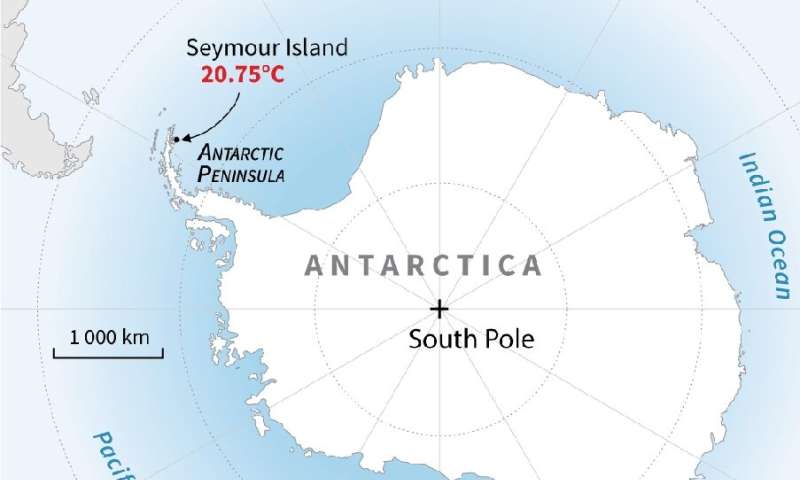Aishwarya Sukesh 2/25/2019

Slide 1 of 9:
The Earth has been through some devastating environmental episodes in the first eight months of 2019 alone, including fires in Brazil, Hurricane Dorian devastating the Bahamas, and record-breaking temperatures in Paris.
But nowhere does the rate of environmental change or its impacts occur more quickly or severely than in the Arctic. When something changes in the Arctic, things closer to home can change as well—sometimes in a more amplified way. Melted land ice in this region has been responsible for roughly 60% of the global sea-level rise since 1972, according to the National Snow and Ice Data Center (NSIDC).
But because the Arctic is thousands of miles away and for some exists merely as a childhood trope for Santa's headquarters, that change can be hard to understand. Satellite images of the Arctic promote conversations about climate change and allow people to understand a relatively inaccessible place.
To explain and contextualize the impacts of climate change in the northernmost part of our planet, Stacker used maps from the Satellite Observations of Arctic Change project.
Resulting from a collaboration between the NSIDC and NASA, these maps use a specific metric to display how current conditions in the Arctic compare to those of the last four decades. Some examples of the parameters include surface air temperature, snow cover, and water vapor levels. The interactive images use data from 1979 to 2017.
NSIDC Senior Research Scientist Walt Meier told Stacker in an email that images from October would be the most representative of change. That's because while the sun's northerly position has remained constant, smaller amounts of sea ice have caused uncharacteristic changes in air temperature and water vapor.
Therefore, five of the eight images presented in this gallery use data from October 2015. The remaining three images include the most recently available data.
Read on to see satellite observations that show the significant scale of Arctic change.

2/9 SLIDES © NSIDC // NASA
Near-surface air temperature
- Time period: October 2015
- "The map shows how air temperatures in the Arctic compared to averages from 1979 to 2015. On the map, areas with higher than average temperatures for the selected month and year are indicated in oranges and reds (positive anomalies), and areas with lower than average temperatures are shown in blues (negative anomalies). These are temperatures two meters above the surface, similar to the temperatures given in weather reports and forecasts."
Air temperature is essential to facilitate many natural processes such as plant growth and even wind speeds. The October satellite map from 2015 shows a lot of orange and red areas, which indicate higher than average temperatures. Arctic amplification is a term used to describe this effect. When there is less ice covering the water, the ocean absorbs the sun's energy instead of ice reflecting it back. As the water absorbs the heat, the near-surface air temperature is amplified in months like October when it historically has been lower.

3/9 SLIDES © NSIDC // NASA
Water vapor
- Time period: October 2015
- "The map shows how the amount of water vapor in the Arctic atmosphere for different years and months compares to averages from 1979 to 2015. On the map, areas with greater than average water vapor for the selected month and year are indicated in purples (positive anomalies), and areas with less than average water vapor are shown in greens (negative anomalies). The values show the mass of water vapor in a column of the atmosphere that stretches from the surface to the top of the atmosphere."
Water vapor regulates the Earth's climate and is what scientists call a greenhouse gas. These gases are capable of trapping and holding heat in the atmosphere instead of allowing the radiation to escape back to space. This process is called the greenhouse effect. This map shows higher than average water vapor temperatures in 2015, which is indicative of a warmer atmosphere.

4/9 © NSIDC // NASA
Sea ice
- Time period: October 2015
- "The map shows how the Arctic Ocean sea ice cover for different years and months compares to averages from 1979 to 2015. The map shows spatial patterns of the differences (anomalies) of sea ice concentration for each year and month. Sea ice concentration is the fraction of the ocean covered by sea ice and is expressed as a percentage. (Most red = 50% less sea ice cover than average)"
Perhaps the most dramatic representation of change, the red on this map represents areas with less sea ice coverage. One of the essential roles of sea ice—beyond the habitat it provides for many organisms—is its ability to reflect solar radiation back to space. A lack of ice means the ocean absorbs the heat. Satellite images from September 2012 showed a record low level of sea ice. While the extent of sea ice in 2015 isn't as low as it was then, it's still below normal levels.

5/9 SLIDES © NSIDC // NASA
Snow cover
- Time period: October 2015
- "The map shows how Northern Hemisphere snow cover for different years and months compares to averages for the period 1966 to 2015. The map shows snow cover, expressed as the number of days a grid cell is snow covered for each month for each year. On the map, areas with longer than average snow cover duration are indicated in blue (positive anomalies). Areas with shorter than average snow cover duration are indicated in red (negative anomalies). The maps of anomalies help show where changes in snow cover are strongest."
Snow cover is the length of time an area is covered in snow, which acts as an insulator for the arctic soil. The process of melting and freezing releases and traps essential minerals that regulate local bodies of water. In later months such as October, snow cover remains relatively high because of the freezing temperatures. But in other regions below the Arctic, anomalies in snow cover are more prominent.

6/9 SLIDES © NSIDC // NASA
Soil non-frozen period
- Time period: 2015
- "The map shows how the number of days in each year the soil surface is unfrozen compares to the average for the period 1979 to 2012. On the map, areas where soil surfaces are unfrozen for more days than average are shown by reds (positive anomalies). Areas where soil surfaces are unfrozen for fewer days than average are shown by blues (negative anomalies). The map of anomalies helps to show where changes the number of days with unfrozen soil are the strongest."
A soil non-frozen period is exactly how it sounds: a period when the soil is not frozen. According to the NSIDC, the soil's non-frozen period started to significantly increase in 2005, which means that the soil was not covered by ice for longer than normal. However, in 2015, the soil was not frozen for fewer days than average. While the changes are seasonal, the duration has been in flux for reasons other than the position of the sun. And just like it's detrimental to have less ice coverage; it's harmful to disrupt the natural, seasonal exposure of the soil as well.

7/9 SLIDES © NSIDC // NASA
Age of sea ice
- Time period: October 2015
- "The map shows the age of Arctic sea ice for each year of a chosen month. On the map, ice that has survived four years or more appears in the darkest shade of blue, while sea ice under a year old appears in the lightest shade of green."
An ice's age is determined by the amount of time it survives without melting. For example, ice that hasn't melted in four years would be considered older ice. The map shows blue ice as old and green as young. Younger ice is more vulnerable to solar radiation and therefore melts more quickly, which makes it harder to sustain sea ice. In October 2015, less than 15% of the sea ice was older than five years.

8/9 SLIDES © NSIDC // NASA
Arctic vegetation
- Time period: October 2010
- "Normalized Difference Vegetation Index (NDVI) is a measure of the concentration of green vegetation for a given area of the land surface. The map shows how NDVI in Arctic land areas for different years and months compares to the long-term average for the period 1982 to 2010. On the map, areas with higher NDVI than the average for the selected month are indicated in greens (positive anomalies), and areas with lower than average NDVI are shown in browns (negative anomalies)."
This map represents data from October 2010 and shows a significant green coloration, meaning that the concentration of plant life is higher than average. July is considered the growing season, and positive change is expected during this time. But the measure of concentration spiked significantly since 2000.

Minimum exposed snow and ice
- Time period: 2013
- "The map shows annual minimum exposed snow and ice cover for each of the years of the NASA Earth Observing System era (2000-2013). This product indicates those areas that never reveal complete soil or vegetation cover across a pixel during the particular year. The annual exposed ice is indicated by blue pixels."
Minimum exposed snow and ice cover translates to areas that rarely show ground, meaning these areas are constantly covered by snow. This map was created with an algorithm that uses daily snow and ice cover images. Change is best seen when zoomed in on the interactive map. This establishes the annual baseline minimum for exposed ice.






/cdn.vox-cdn.com/uploads/chorus_image/image/66274904/GettyImages_477313181.0.jpg)





















